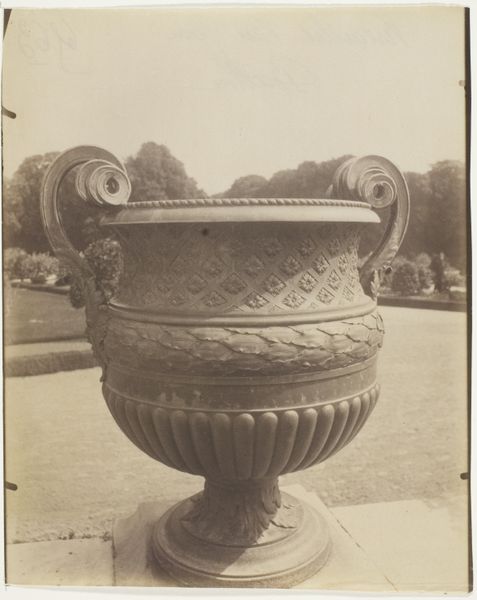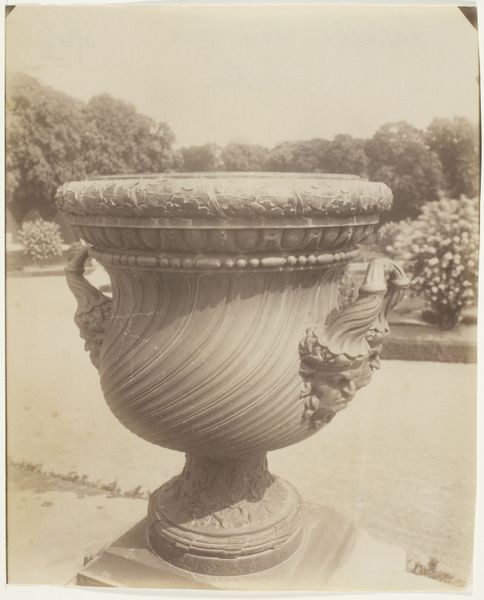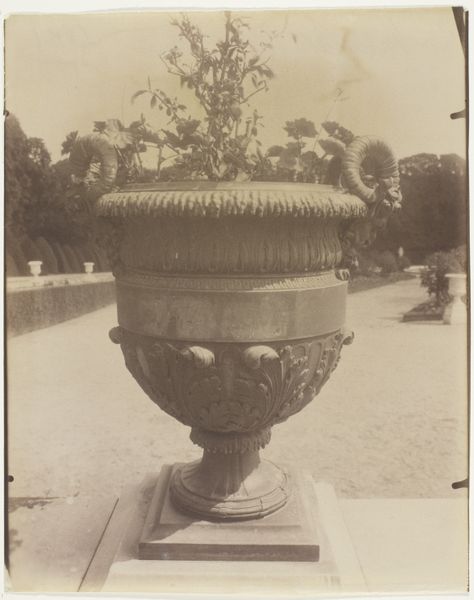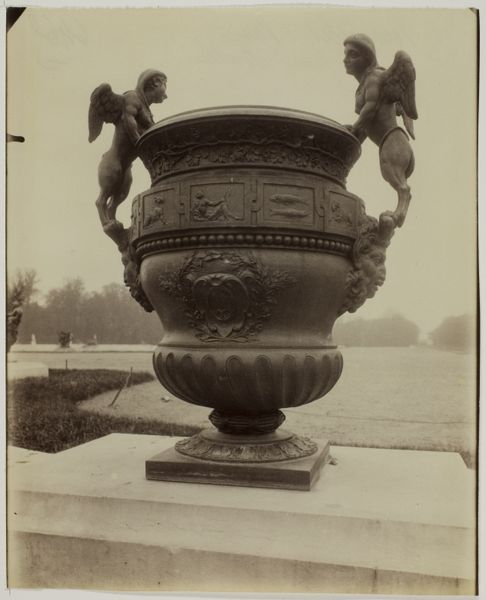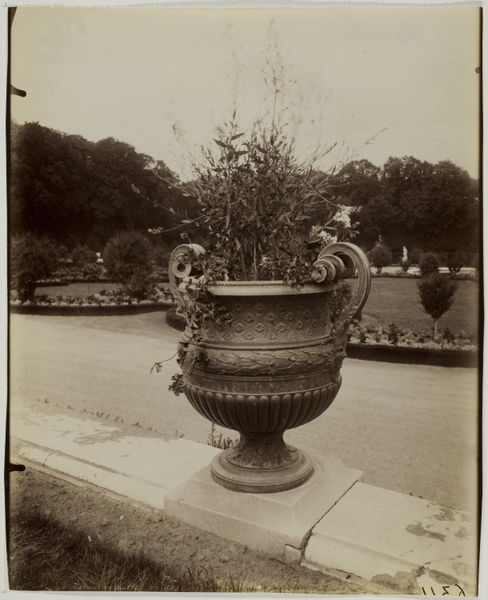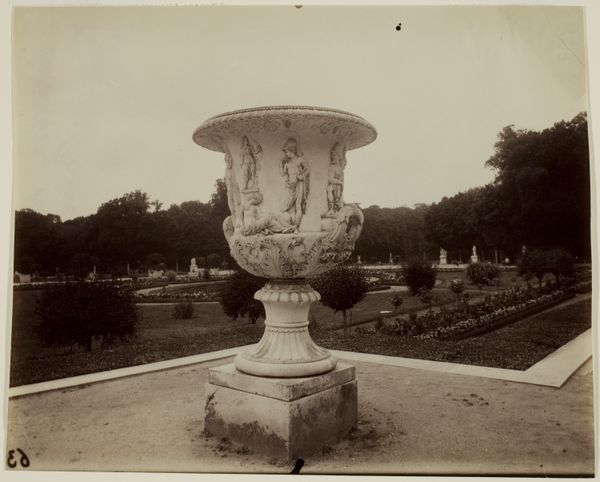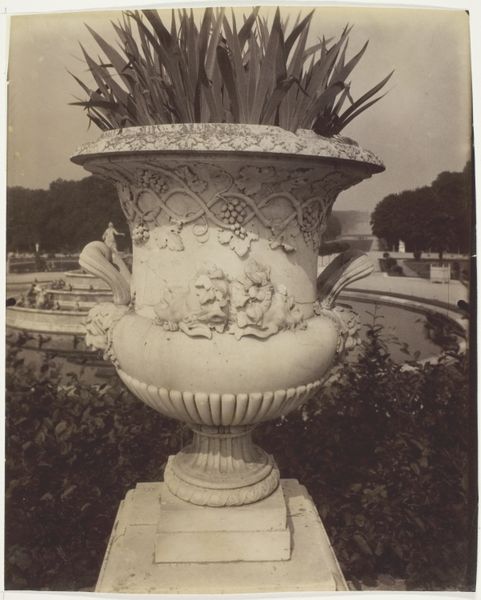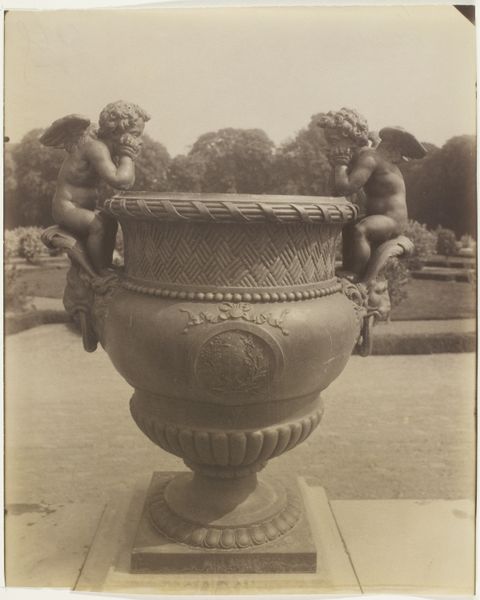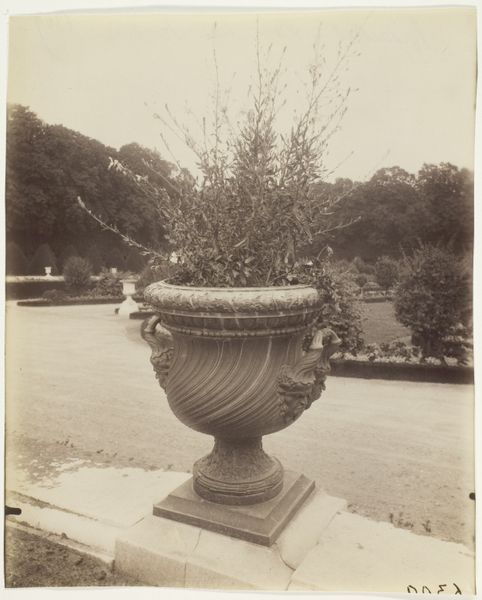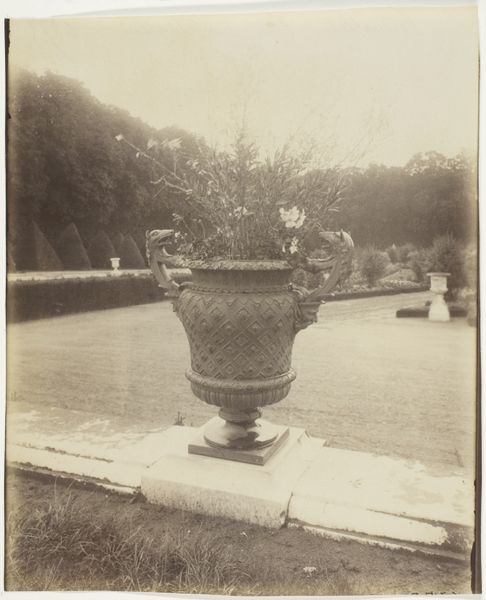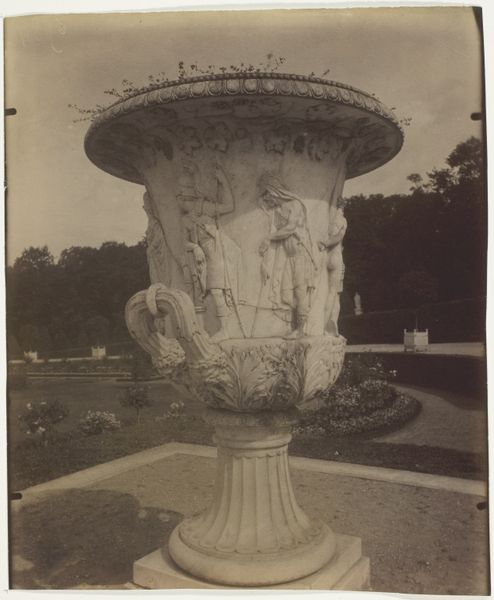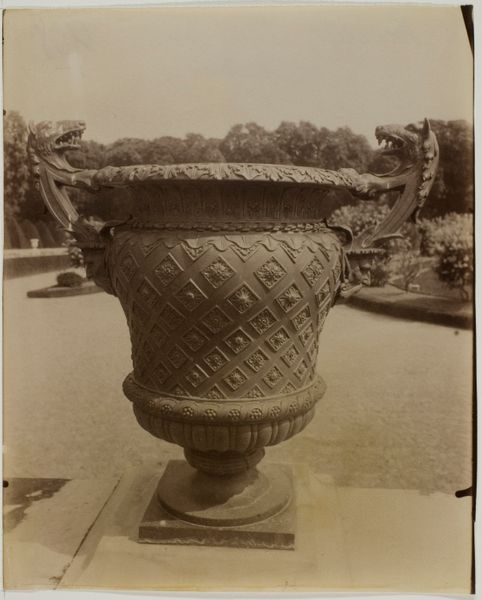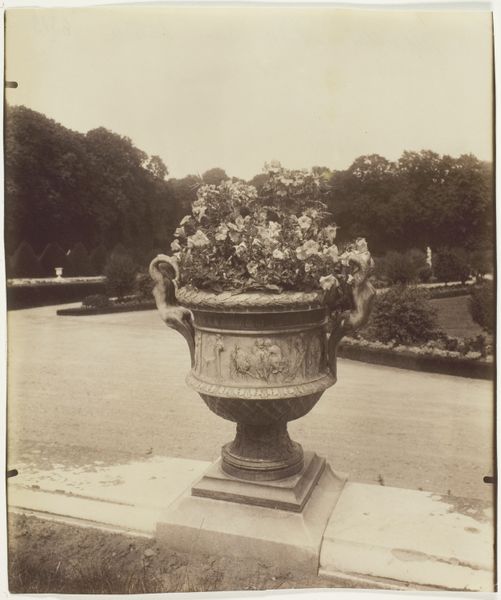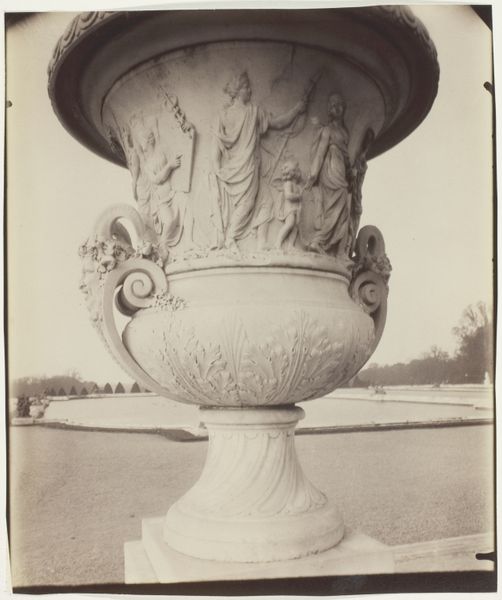
silver, print, photography
#
silver
# print
#
landscape
#
photography
#
historical photography
Dimensions: 21.3 × 17.5 cm (image); 21.3 × 18 cm (paper)
Copyright: Public Domain
Editor: Here we have Eugène Atget’s photograph, "Versailles, Vase par Ballin," taken in 1901. It’s a silver print depicting a large ornate vase in the gardens of Versailles. The tones are muted, almost sepia-like. What strikes me is how this everyday object becomes a symbol of power. How do you interpret this work? Curator: That's a great observation. I think Atget's photograph speaks volumes about class, privilege, and the lingering traces of power within these carefully constructed landscapes. It prompts us to question: who gets to enjoy such spaces, and who is excluded? How does the monumental scale of the vase, adorned with classical motifs, reinforce a specific narrative of Western dominance? Editor: That’s fascinating. I hadn’t considered the element of exclusion. The vase seems so permanent, almost a monument. Curator: Exactly. And the garden itself is not simply nature; it's a carefully controlled environment. This photograph allows us to reflect on how such curated spaces often reflect and perpetuate existing social hierarchies. It becomes a visual representation of the inequalities embedded within society. Do you think Atget was conscious of this when photographing this scene? Editor: It's hard to say, but your reading really makes me think about the photograph in terms of access and control. Maybe the emptiness of the surrounding pathway is also saying something. Curator: Precisely. It creates a tension, doesn't it? And I wonder what it says to *us* today. Editor: Definitely. It makes me consider Versailles not just as a beautiful historical site, but also as a place burdened with history and meanings of power. Curator: Absolutely. Atget's photograph is not just a picture of a vase; it's a prompt to deconstruct the systems that shape our world.
Comments
No comments
Be the first to comment and join the conversation on the ultimate creative platform.
